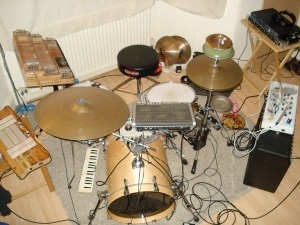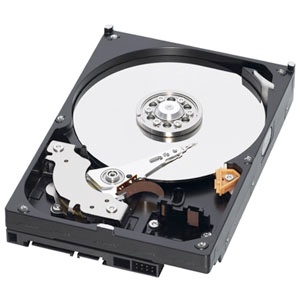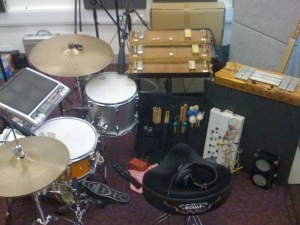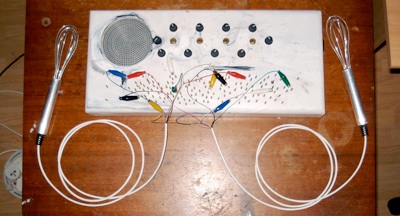STEIM Workshop

I recently spent a week and a half at STEIM and it was amazing. This is the blog I posted for their project blog.
———————–
I’ve known about STEIM, in one way or another, for almost 10 years now. While living in Miami (currently in the UK), it existed as a faraway place where amazing, almost magical, things happened.
After moving to the UK I always had, in the back of my head, a thought that I would go and see it in person. After starting my MA (in Electroacoustic Composition at the University of Manchester) I decided to apply for an orientation workshop.
Now backing it up a bit. Zoom and enhance. Zoom and enhance.
/////////////////////////////////////////////////////////////
I’m a performer, improviser, and composer, likely in that order. I’m also an instrument building and modifier.
What I most often do is improvise using my drums+electronics setup. It looks like this:

I built and/or modified nearly everything on that drum set (down to the drums themselves), including all the electronics laying around it.
My approach to electronics, in general, is very DIY/lo-fi. I haven’t used a laptop in live performance in over three years, and I only did it for a couple of months then anyways. Most of what I do is hardware based. Even now that I’m getting into sensors, code, and microcontrollers, it is leaning towards self-standing, embedded solutions (ie Aruduino, iOS, etc…).
So what does it sound like?
Here is an short track from an improvisation-based CD I did with brilliant composer/performer Pierre Alexandre Tremblay:
Glitch House Beat (200bpm)
It also looks like this:
GEMDays 2010 Performance
/////////////////////////////////////////////////////////////
Ok, back to STEIM.
Being that I build instruments and such already, I have a few ideas for things that might be worth applying for a residency for. The two main ideas are as follows:
1 – An accelerometer and gyroscope based wireless sensor for attaching to the wrists of a live painter.
2 – A computer hard-disk ‘percussion’ instrument that is part automaton.
Now for some details. The first one is intended for a cross-disciplinary improvisation-based group I have, called Takahashi’s Shellfish Concern.
It looks like this:

And sounds/looks like this:
TSC @ The Noise Upstairs
The manner in which we, more recently, perform is that there are contact mics placed on the back of the canvas, and the two musicians (Anton Hunter and myself) sample/process the sounds of the brushes/palette knives on the canvas. Where the sensors come in is that they would be controlling a system (max/MSP) that samples/processes the sounds she makes. In effect making the sounds from the video linked above a self-standing instrument. This will allow Anton and myself to go back to using more ‘traditional’ (and I use that term VERY loosely) instruments.
My original plan was to use gutted/adapted wiimotes for this project. More specifically wiimotes with wii motion plus built in as the gryos would give much more accurate tilt/rotation readings. I still plan on doing that for the development of the software, but after speaking to nearly everyone here at STEIM, it’s clear that bluetooth is not the best solution for wireless performance. Lots of connectivity type issues that I’d rather avoid. I think the final hardware version will be something based on an accel/gyro/arduino board with the wireless part being XBee based.
Now this project seems right up STEIM’s alley in terms of sensor/wireless/art/interaction etc.. but it also falls in an area just outside of what I can manage on my own. And particularly in terms of software (more on this below) I think it would be better to just develop/build it on my own and maybe apply for a residency to refine it later on.

Now the second idea, the hard-disk clicking one. This is what I think I will apply for a residency for as it involves things that are outside of my understanding quite a bit, and fit in with what STEIM does, but in a different way. The current/rough idea is that it would contain four ‘open face’ computer hard drives (very old/loud ones) that would be mounted on a wooden/resonant enclosure. Below that would be several foam drum-pads. When tapping one of the pads, the corresponding hard drive would start a clacking pattern that would die away. Each hard drive would have a different pattern it went through and/or all would cycle through different patterns. I’m also thinking of using the platters themselves as encoders and having contact mics on them to amplify/process the sound later on.
The kicker is that I want it to be self-standing. As in, no computer. Due to the multi-instrumental approach I have at my drumset (see picture below) adding a laptop to the system would be prohibitively complicated, AND it would be nice for it to be a self contained system.

So those are two ideas that spending time at STEIM has really gotten me thinking about. Well what about the time itself?
The workshop/talks have been great. Getting demonstrations of JunXion/LiSa were very handy, as well as learning about the history of STEIM. For me the fun started on day three (or was it four?). Taku’s talk on inventing instruments, as well as Kristina Anderson’s interaction design talk were my favorites. That conceptual approach to the instruments/interfaces is something that resonates with me. More of my recent builds have been interface adaptations, like the Electric-Whisks.

How I interface with my instruments is a big concern in a mixed instrument like mine. The interface choices I make have to account for being an instrumentalist at the same time. I’m not a ‘controllerist’ in any way.
In addition to drums, I play piano/guitar and similar instruments (piano is actually my first instrument starting at 4years old and studying it through university). This instrumental extension is something that poses unique interface problems. I’ve never been a big fan of sensors for sensors sake in that music doesn’t become more exciting if you throw a sensor glove on it. I believe the music is what’s exciting. I guess this is a tangent/rant that could live elsewhere.
What about the STEIM hardware/software?
Hardware wise the Arduino, and similar boards, really changed the game. Most of what I saw here, instrument wise, was based on Arduinos and old PowerPC Mac Mini’s (interestingly enough). They do seem to be making some interesting developments in terms of XBee/wireless type solutions. I’m curious to see if that manifests itself commercially.
Software wise it’s a bit weird. LiSa, the longstanding staple of STEIM software feels really limited to me. Granted, it does what it does well, and I LOVE live sampling. For me the limitation comes in in terms of MIDI resolution. I HATE the sound of 127 steps in gestures. That step-step-step sound when doing rapid and/or long changes kills it for me. The fact that there is no easy way to incorporate DSP into the equation is another bummer. I’m half tempted to learn LiSa and develop a setup with it, but knowing that there is a roof, as it were, isn’t appealing. I’ve done some max/MSP stuff in the past, and although I can’t make a LiSa in Max, it might be worth the work/effort building it in there as theres no ‘roof’. There is also a more practical limitation in that LiSa runs in rosetta, which is supposed to be gone from the next OS X (10.7) update. Yikes!
So in summation. STEIM is an amazing place. Vibrant with energy, history, and brilliant people. It’s hard not to get inspired here. And inspired I am. There are practical manifestations of this (the instrument ideas above) but more importantly there is a deeper, conceptual inspiration in terms of electronic music and interfaces.


